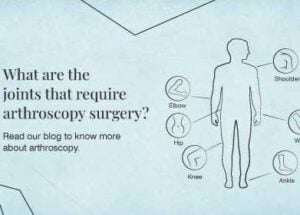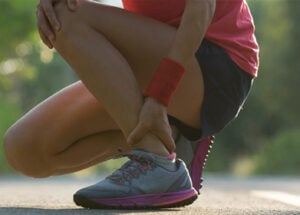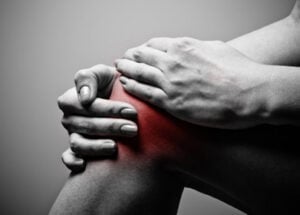Knee Pain Treatment – Causes & Remedies
December 31, 2021

Knee pain is a common complaint that arises in people irrespective of their age. The cause of this could be due to various reasons like acute injuries to complicated medical conditions.
The knee joint is made of bone, cartilage, ligaments, and fluid. Muscles and tendons help the knee joint move. When any of these structures are damaged, one might endure These are some of the more common causes of knee pain:
Common Causes of Knee Pain:
- Osteoarthritis – The cartilage in the knee slowly diminishes.
- Rheumatoid arthritis – The knee may become swollen and cartilage may be destroyed.
- Ligament injuries – Ligament is a band of strong tissue in a person’s body that connects bones. There are four ligaments in the knee that are prone to injury
- ACL (Anterior Cruciate Ligament) is the most commonly injured knee ligament and is common in people who play basketball, soccer or other sports that require sudden changes in direction
- PCL (Posterior Cruciate Ligament) One cause specific to PCL injury is hyperextension of the knee. This can occur during athletic movements like jumping. PCL injuries can also result from a blow to the knee while it is flexed, or bent. This includes landing hard during sports or a fall, or a car accident.
- LCL (Lateral Collateral Ligament) Activities that involve bending, twisting, or a quick change of direction. For example, the LCL can be injured in football or soccer when the inside of the knee is hit.
- MCL (Medial Collateral Ligament) tears happen most often during sports involving turning, cutting, and pivoting like skiing, soccer, football, basketball, and tennis.
- Tendon injuries or Sports Injuries – These can range from inflammation to a tear, most likely from overuse in sports or from a fall.
- Cartilage injuries and disorders – Injury, overuse, muscle weakness, or misalignment of the knee can soften the cartilage of the kneecap, or a blow to the knee may tear off a piece of cartilage.
- Broken kneecap – The small, round bone (patella) that sits over the front of the knee joint breaks, usually as the result of a fall or a direct blow to the knee.
- Fractures – The knee bone, including the kneecap, can be broken during falls or accidents. Also, people whose bones have been weakened by osteoporosis can sometimes sustain a knee fracture simply by stepping wrong.
Remedies for Knee Pain
Knee pain Treatments will vary depending upon what exactly is causing it. Some of the remedies for knee pain include
- Hot and Cold Packs – Using hot packs in the form of hot water bags or hot towels or ice packs is one of the best and simplest anti-inflammatory at-home treatments. Do not apply ice directly on the skin over the knee, wrap it in a towel or a piece of cloth and then place it on the knee.
- PRICE (Protection, Rest, Ice, Compression and Elevation) – Rest, Ice, Compression, and Elevation may help treat mild knee pain such as a sprain. Protection refers to protecting the knee from further injury, for instance by taking a break from the activity that caused it.
- Aromatherapy – Essential oils have been used for centuries to treat many symptoms. They are often used in aromatherapy. Massaging with an oil containing ginger and orange improves pain and function in knees with moderate to severe pain due to osteoarthritis. Applying an ointment containing cinnamon, ginger, mastic, and sesame oil had a similar effect on pain, stiffness, and motion.
- Compression – A compression bandage that is light in weight and breathable can be a huge relief. It should be tight enough to support the knee but should not hamper the circulation.
- Elevation – To help reduce swelling, try bolstering up the injured leg on pillows or sitting in a recliner will also help.
- Stay physically active: Resting too much is not advisable. Avoid sitting in one place for prolonged periods. In the case of a desk job, ensure to get up from the place after every 45 minutes and move around for at least a minute. A sedentary lifestyle can weaken the muscles and put pressure on the knees while standing, walking, and running.
When to see a doctor
Not every knee pain requires ortho medical treatment, sometimes it can be treated by self-help measures also. In case you need help with the knee pain treatment, you might have to consult a physiotherapist or a general physician.
- Seek immediate medical attention- If your knee injury is accompanied by a deformed joint, a popping noise, the inability to bear weight, intense pain or sudden swelling, you should seek immediate medical attention.
- Schedule an appointment with the doctor- If your knee injury results from a forceful impact, or if you experience major swelling, redness, tenderness and warmth around the joint, significant pain or fever, you should make an appointment with your doctor.
- Self-care- Not all knee pain requires medical treatment. If your knee pain comes on slowly, results from a minor injury or results from a more strenuous activity, it can sometimes be managed at home. You can try over-the-counter pain relievers and should follow the RICE model of self-care.
See a doctor if:
- You’re in severe pain
- Your painful knee is swollen
- It doesn’t get better after a few weeks
- You can’t move your knee
- You can’t put any weight on your knee
- Your knee locks click painfully or give way – painless clicking is not unusual and is nothing to worry about.
It’s important not to misdiagnose yourself. If you’re worried or the pain does not reduce, you should see a doctor. If your knee pain is new, get a doctor to check it out. It’s best to know what you’re dealing with at the earliest which will aid you to prevent any more damage.
Multispeciality Hospital | Best Ortho Hospital in Chennai | Ortho Doctor Near Me










